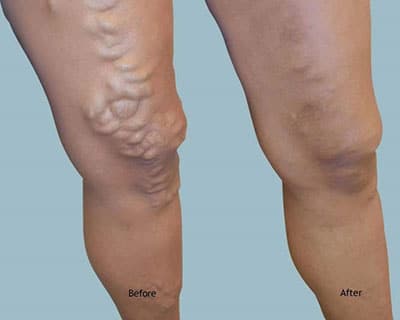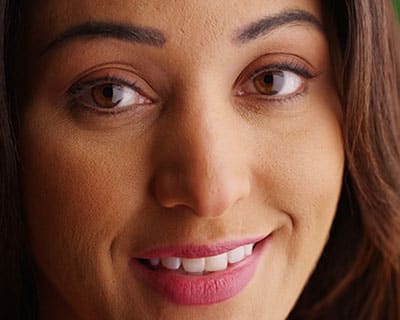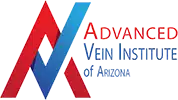Varicose Veins Symptoms, Causes, and Treatment
For many people, varicose veins cause pain, aching, and discomfort or signal an underlying circulatory problem. In some cases, there are no symptoms and these are simply a cosmetic matter.
What are Varicose Veins?
Varicose veins and venous dysfunction affect 25% of the population. Sometimes referred to as venous varicoses or varicosities, these are enlarged veins which have become weak, dilated and filled with blood. Often these veins are twisted, enlarged, and bulging and can have a bluish, purple or red color and have more than 4 mm diameter. Vein enlargement is caused by leaking valves know as venous reflux disease.
Occasionally these veins are inside the leg and cannot be seen on the surface. Since these veins are often not visible, many patients and sometimes primary care providers may not even consider your symptoms to be related to varicose veins and venous insufficiency.
According to recent studies, varicose veins affect over one-half of the people age 50 and older in the United States, as well as affecting a significantly high percentage of Americans in their 30s and 40s, making it the most common human vascular disease. Although sometimes referred to as a cosmetic concern, more often these veins are a sign of a larger venous complication like Chronic Venous Insufficiency (CVI).
CVI is a progressive disease. Varicosities can lead to more pain and swelling, and occasionally surface blood clots, ulcers, swollen veins, and bleeding. They rarely lead to serious or deadly medical complications. You should consider vein treatment if you are having leg pain or you just can't stand how they look... this is truly a personal decision.

Patient Testimonial
Dr. Rose and her staff are efficient, friendly, professional and excel in communication. I cannot say enough good about my experience in having varicose veins treated, and I will recommend her to anyone I can.
Barbara M. in Phoenix
Advanced Vein Institute Patient
Varicose Veins Symptoms:
Although the easily recognizable symptoms are visual such as bulging veins in legs, several other signs of varicose veins are often present as well, including:
- Aching legs
- Heavy legs
- Burning, throbbing, or swelling legs
- Sometimes swelling in the ankles can be seen in the feet with bulging veins.
- Muscle cramps
- Leg fatigue
- Bleeding veins
- Itching veins
- Restless legs
- Leg pain after sitting or standing long periods
- Skin ulcers or inflammation
What Cause Varicose Veins?
Varicose vein causes are pretty straightforward; normal veins have one-way valves that prevent blood from flowing in reverse as your body pumps blood back to the heart. When these valves cease to function properly, blood is allowed to collect, or pool, instead of returning to the heart. The majority of varicose veins occur in the legs as they are farthest from the heart and gravity makes it even more difficult for blood to travel upward. Chronic venous disease is a progressive degenerative problem.
Watch Jilanne Rose explain the causes of Varicose Veins in this 3-minute video.
The following are found to be the most common varicose vein causes:
- Age - As we get older, veins can become weak as they stretch due to loss of elasticity. This is a progressive disease that can lead to more leg pain and swelling.
- Pregnancy - In order to support a growing fetus, the volume of blood in the body increases, and with hormonal shift, the veins in the extremities become weak. Read More-->
- Family History - There’s a much greater chance of having varicose veins if family members have or had them.
- Standing or Sitting for long periods - Blood does not flow well without body activity.
Varicose Veins Prevention

- Do not sit or stand for long periods of time.
- Elevate your legs whenever possible or convenient and raise your legs above your heart when possible.
- Eat a high-fiber, low-salt diet.
- Low-impact exercise such as walking, cycling, or dancing.
- Avoid high heels and hosiery with tight bands.
- Wear medical grade compression stockings.

Patient Testimonial
"I never write reviews, but I feel compelled to do so based on my overwhelmingly positive experience with the Advanced Vein Institute of Arizona. I've dealt with vein issues for 20 years and I finally decided it was time to do something about it. I did A TON of research and I met with doctors at (two competitor offices). Both places left me underwhelmed and discouraged.
From my initial consultation at the Advanced Vein Institute with Jilanne to my actual procedure, I knew I made the right choice. Jilanne was extremely empathetic and took the time to answer all of my exhaustive and annoying questions. I had to have 4 procedures done and throughout the whole process, Jilanne and Karlea made it a point to make sure I was comfortable. Jilanne and Karlea are both experts in their field and I felt 100% confident in their care.
The facilities are modern and beautiful and everyone from the front desk staff to the billing department (shout out to Michella) were incredibly kind and helpful.
If you are dealing with any sort of vein issue, I highly recommend meeting Jilanne at Advanced Vein Institute of Arizona. You will not regret it!"
Rachel S.
Advanced Vein Institute Patient
Varicose Vein Treatment Options
There are several modern in-office procedures for varicose vein treatment. We don’t use outmoded vein surgery methods such as phlebectomy or vein stripping, as these are painful procedures with slow healing times. We have perfected endovenous (inside the vein) techniques to successfully treat the great saphenous veins and small saphenous veins. Pain relief for varicose veins is available for everyone. In fact, most of the time Dr. Rose is able to treat accessory veins that other vein doctors often thought untreatable using endovenous approaches. Patients and referring physicians alike are amazed at Dr. Rose's technical expertise as she treats veins that other vein doctors have recommended phlebectomy, microphlebectomy, or vein stripping.
The methods we employ for varicose vein pain treatment:
- Medical Adhesive (VenaSeal Closure System) - This is “State of the Art” technology and causes very little pain (if any) and resumption of all activity the same day as treatment. This FDA approved procedure became a covered service by Medicare in January, 2018 and hopefully other insurances will follow.
- Laser Treatment (Endovenous Laser Treatment (EVLT) - This treatment uses laser energy to ablate (destroy) the vein. This is a minimally invasive procedure and is covered by most insurances.
- Radio Frequency Ablation (ClosureFast Radiofrequency Procedure) - This updated procedure uses radiofrequency instead of laser to ablate the vein. This is normally covered by insurance.
- ClariVein® Varicose Vein Treatment - This procedure is a minimally invasive method which uses a mechanochemical device to close diseased superficial veins. This is covered by most health insurance plans.
- Varithena - This Varicose vein treatment involves injecting a microfoam that causes veins to close. Varithena is minimally invasive, and patients reporting pain at the injection or application site in clinical trials was 4.0%.1 There’s no need for incisions or stitches, and treatment is usually less than an hour. Most people only need a single treatment to see results.
- Liquid Sclerotherapy and Compression (chemical injection) - Sclerotherapy can be used to treat smaller veins. This can be a time and cost effective procedure but sometimes requires multiple sessions for complete success.
Next Steps for Vein Evaluation
At our vein institute, we believe that every patient is unique, and every varicose vein treatment should be specifically tailored for each patient. A full exam and Duplex Ultrasound will enable us to properly diagnose and recommend treatment based on your specific needs.
Are you ready to get started?
Not quite sure yet?
Why not read what other patients have said, we love to share feedback!

